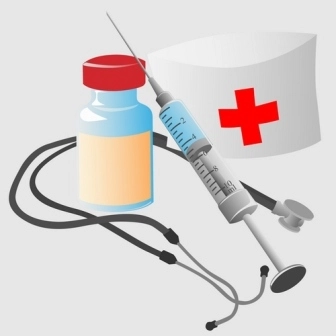Internal Medicine Coding Alert
Bust These Myths to Ensure Milia Treatment Coding Success

Know the difference between incision and destruction.
When your internal medicine specialist treats a case of milia, if you are confused whether to report a surgery code or a destruction code, you are not alone. You will need to be aware of when to report the procedure of milia treatment with removal codes and when to use codes for destruction.
Bust these three common myths surrounding milia treatments that will help you overcome reimbursement hassles and ensure reporting success each time you report a case of milia.
Myth 1: 10040 and 17110 Are Interchangeable
Reality: The main difference between 10040 (Acne surgery [e.g., marsupialization, opening or removal of multiple milia, comedones, cysts, pustules]) and 17110 (Destruction [e.g., laser surgery, electrosurgery, cryosurgery, chemosurgery, surgical curettement], of benign lesions other than skin tags or cutaneous vascular proliferative lesions; up to 14 lesions) is that the 17110 code is a destruction while the 10040 code is an incision and drainage or removal.
The code 10040 states that either an incision is made into the cysts or milia or they are removed. Code 17110 is explicitly for destruction.
Hint: In CPT®, any code with a prefix of “17” is a destruction code. As mentioned in 17110’s description, the most common forms of destruction include the application of liquid nitrogen or other chemical agent (a.k.a. cryosurgery), curettage, electrodessication, or the use of a laser.
Meanwhile, your physician usually removes a lesion of milia by using a comedone extractor, which is a tool not much bigger than a pair of tweezers.
Reimbursement: Don’t get tempted to report one code over the other just because of potential payback figures. Based on Medicare rates, code 10040 pays back $103.12 while 17110 comes in at $112.07. “Remember, coding drives payment; payment should not drive coding,” advises a coder. “The extra nine bucks is not worth a fraud and abuse allegation or potential prosecution under the False Claims Act.”
Also, you should always be aware that some payers may not consider treatment of milia as a medically necessary procedure. “If you suspect that is the case for a particular patient, you should advise the patient before the service and be prepared to collect from the patient, if the payer denies the service as non-covered and assigns it to patient responsibility,” the coding expert suggests.
Myth 2: You Can Code 17110 and 17111 Together
Reality: The series 17110-17111 specifies the destruction of benign lesions that is medically necessary. If you use a destruction code to report milia treatment, you should remember that 17110 is for up to 14 lesions while 17111 (...15 or more lesions) is for 15 or more lesions treated at one time. Thus, you will never code 17110 and 17111 together at any given time on any particular patient.
Red flag: When assigning codes for benign or premalignant lesions, the number of lesions matters. Furthermore, an appropriate ICD-10 code should come with reporting 17110-17111. Some of the most common diagnosis codes that you will report include L82.0 (Inflamed seborrheic keratosis), B07.9 (Viral wart, unspecified), L72.3 (Sebaceous cyst), and B07.8 (Other viral warts) when reporting removal of warts such as common wart, flat wart, and verruca plana. Milia is classified as L72.0 (Epidermal cyst).
Extra: You may also report 17110-17111 with D23.9 (Other benign neoplasm of skin, unspecified) and D48.5 (Neoplasm of uncertain behavior of skin).
Myth 3: The Physician’s Report Isn’t Important
Reality: Milias are tiny white bumps of keratin in the glands of the skin. They are common in newborns’ faces — usually on the tip of the nose or chin — but are also found in adults. Medicare and most carriers have a benign lesion destruction/removal policy that you must meet in order to bill milia treatment. Look out for the proper symptoms that should be indicated in your physician’s documentation or report, such as:
Related Articles
Internal Medicine Coding Alert
- HIV Screening:
HIV Screening Services Strengthened by Adding New HCPCS G0475
Hint: Repeat screenings are only billable within a year for pregnant women. When your internal [...] - Mythbuster:
Bust These Myths to Ensure Milia Treatment Coding Success
Know the difference between incision and destruction. When your internal medicine specialist treats a case [...] - Quick Tip:
Blink and Miss Conversion Factor Change
CMS made recent small adjustment. If you weren’t paying close attention, you might have missed [...] - Compliance:
Insurance Verification Is Key To Capture Hundreds of Lost Dollars
Double check to ensure patient’s insurance info is valid before first visit. When you are [...] - Reader Question:
Underlying Cause Important for Coding ED
Question: Recently, our internist reviewed a male patient and made a diagnosis of erectile dysfunction. What [...] - Reader Question:
Append Correct Modifier for Substituting Physicians
Question: We are a group practice and if an internal medicine specialist who is not a [...] - You Be the Coder:
Focus on PFSH in History Section for E/M Code Selection
Question: The internist’s office visit note indicates a comprehensive examination and high-complexity medical decision making for [...]




